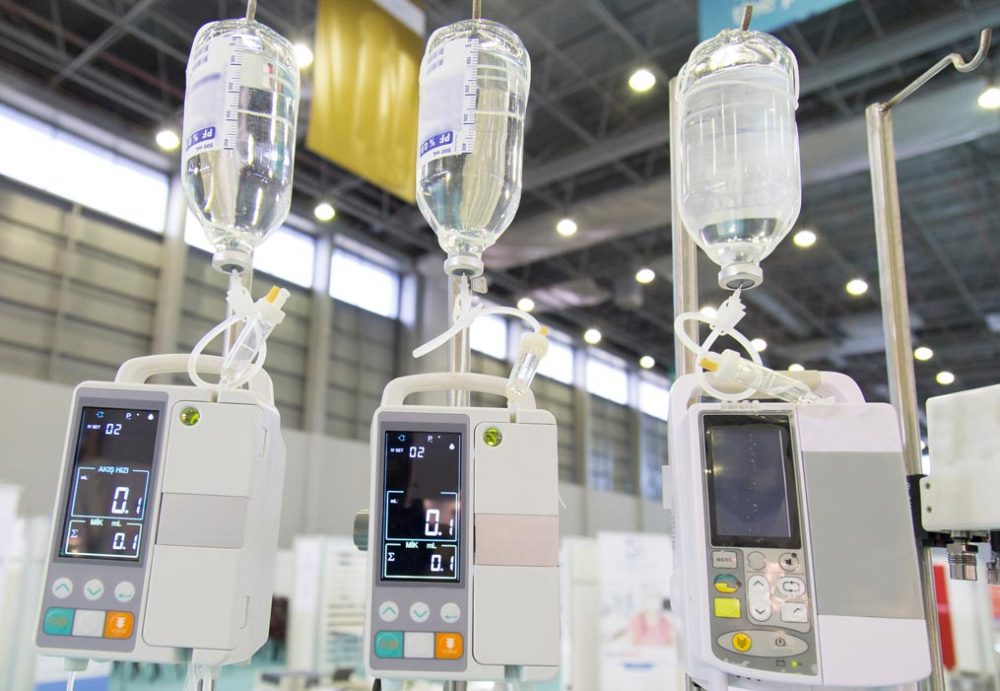Advertisment
Infusion pump could change Parkinson’s treatment

Researchers from an international phase 3 trial report that the standard Parkinson’s treatment levodopa delivered through an infusion pump rather than orally is safe and effective at reducing symptoms, and does so for comparatively longer periods of time.
These findings were published March 15, 2024 in Lancet Neurology.
Parkinson’s symptoms such as tremors, slowness and stiffness result from low levels of dopamine. The standard treatment is oral levodopa, the inactive substance in the brain that makes dopamine.
“Levodopa is a replacement strategy. We all make levodopa, but Parkinson’s patients make less of it,” said investigator Alberto Espay, MD, co-principal investigator of the trial and James J. and Joan A. Gardner Family Center for Parkinson’s Disease Research Endowed Chair at the University of Cincinnati in Cincinnati, Ohio.
In this new trial, researchers tested continuous, 24-hour levodopa delivery through a subcutaneous infusion pump compared to standard oral therapy. “We aimed to assess the safety and efficacy of a continuous 24 hour/day subcutaneous infusion of investigative ND0612 (a levodopa–carbidopa solution) compared with oral immediate-release levodopa–carbidopa for the treatment of motor fluctuations in people with Parkinson’s disease, the authors said.
The investigators enrolled men and women aged 30 years or older with a diagnosis of Parkinson’s disease who had at least 2.5 hours per day of “off” time, time when symptoms reemerge.
The subjects underwent a 12-week, open-label run-in phase where optimal regimens were established for both oral immediate-release levodopa–carbidopa and for 24- hour subcutaneous ND0612 infusion (levodopa–carbidopa).
Following the run-in phase, 259 subjects were randomized (1:1) to 12 weeks of double-blind treatment with either subcutaneous ND0612 (n=128) or oral levodopa–carbidopa (n=131). And 243 completed the study.
The primary endpoint was the change, from baseline to the end of the double-blind phase, in total daily time without troublesome dyskinesia.
The researchers reported that levodopa delivered through an infusion pump was both safe and, compared to oral delivery, led to 1.72 more hours per day of additional “on time” when symptoms were reduced.
The authors concluded, “Results of this phase 3 study showed that subcutaneous ND0612 used in combination with oral immediate-release levodopa–carbidopa increased on time without troublesome dyskinesia and reduced off time, with a favourable benefit–risk profile. ND0612 might offer a safe and efficacious subcutaneous levodopa infusion approach to managing motor fluctuations in people with Parkinson’s disease. The ongoing open-label extension phase will provide further information on the long-term efficacy and safety of treatment.”
Espay spoke of the possibility of the infusion pump delivery system being approved by the FDA/ (US) Food and Drug Administration. “Once approved, this will become an important treatment strategy to consider for patients with Parkinson’s disease experiencing motor fluctuations not adequately controlled with medication,” he said. “Future studies will need to determine the durability of the long-term benefits and whether any safety issues could emerge, as well as how it might compare with deep brain stimulation.”





